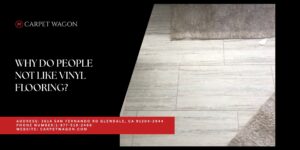Before you choose hardwood for your next flooring installation, there is one important thing you need to consider. While hardwood floors are generally considered one of the most attractive, luxurious flooring options. For all its classical appeal however, it has a major weakness: it is easily warped or damaged by moisture. Wood flooring is a natural product, and is therefore subject to the same forces that affected the trees from which it is derived. The porous nature of wood means that it absorbs moisture, not just from spills or rain, but also from ambient conditions like heat and humidity.
Wood is hygroscopic, meaning that it absorbs moisture and swells up. The microscopic pores in wood draw moisture in and trap it. When the tree was alive, it would have used the water to fuel its biological processes, but now that it is dead the water just sits in there, and as it builds up will cause the wood to expand, lowering its density thereby softening it. Eventually this expansion can cause the wood to break down. Even after the water eventually evaporates, the structure of the wood will remain altered.
As if this structural damage was not enough, the moist environment created when wood becomes saturated is ideal for the growth of fungi, bacteria and mold. Spores find their way into the affected wood and eventually germinate and begin to digest the elements in the wood that give it strength and stiffness. You may notice a black stain on the surface of the floor at this point. The wood becomes soft, cracked and spongy. Once rot has begun to set in it quickly spreads as the fungi reproduce. At this stage a homeowner would have no choice but to replace the floor.
Spotting Water Damage
There are several signs to keep an eye out for that may mean water damage, catching it early could save your floor and save you money:
1. Musty Odor
2. Darkening of the Wood Surface
3. A Hazy White Stain
4. Cupping, Popping, or Cracking of Boards
Preventing Water Damage
Water damaged wood is difficult and expensive to repair, making it imperative to do everything possible to prevent water damage in the first place. There are several easy steps to prevent damage to your beautiful hardwood floors.
1. Keep areas that see frequent water exposure dry. Floors near the shower or bath, doors and windows during the rain and near the pool should be monitored.
2. Keep up with roof maintenance, a hidden roof leak can quickly cause serious damage.
3. Have appliances and pipes checked regularly, at least once a year, to ensure no leaks are present.
4. During times of high humidity, turn on the dehumidifier.
5. Have windows sealed with caulk to prevent leaks.
For more information, contact Carpet Wagon today. We’ll put you on the path to great flooring that can withstand all of life’s troubles.





